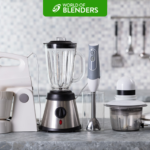This post may contain affiliate links. If you use these links to buy something we may earn a small commission. Thanks.
Picking a new juicer for your kitchen is a big decision. Quality juicers are expensive and last a while so whatever you buy, you’re going to be stuck with.
Getting your own juicer is a game changer to eating healthier, boosting your immune system, and hitting all of your health goals.
There are 6 different types of juicers to pick from:
- Masticating juicer
- Centrifugal juicer
- Twin gear juicer
- Hydraulic press juicer
- Manual juicer
- Steam juicer
With six different kinds of juicers it’s hard to know what to pick from. The most popular and widely used juicers are masticating juicers and centrifugal juicers. The key is to get something that meets your needs, is versatile, and not too expensive.
I’ll be doing a high level summary on the different types of juicers, their pros and cons, and what to look for in a good juicer.
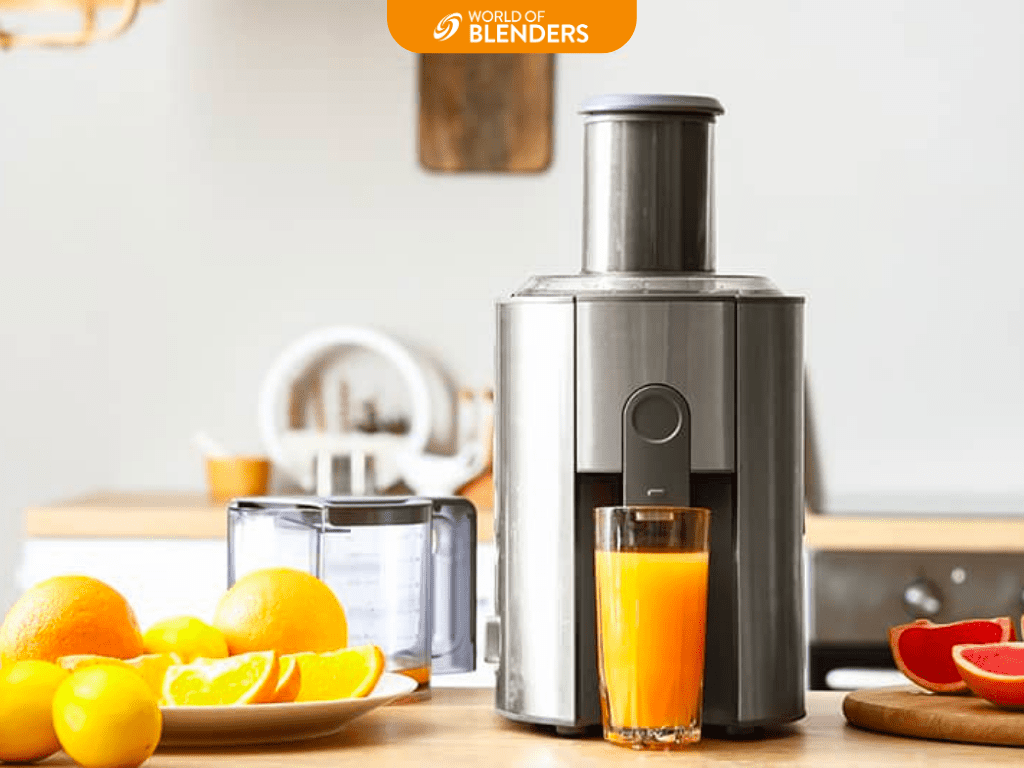
Quick Summary: Comparing Different Types of Juicers
My hope is to help you pick the best type of juicer for your kitchen. Each type has unique pros & cons and their own special features.
| Type of Juicer | Best for | Typical price |
| Masticating juicer | Best for beginners & freshness | $$ |
| Centrifugal juicer | Best for speed | $ |
| Twin gear juicer | Best performing | $$$ |
| Hydraulic press juicer | Great for commercial use | $$$$ |
| Manual juicer | Good for citrus or personal use | $ |
| Steam juicer | We don’t recommend 🙁 | $$ |
What Are the 6 Most Common Types of Juicers?
These days there are so many different types of juicers on the market, so trying to choose the best one can be pretty confusing.
1. Masticating Juicer – Best Type of Juicer for Beginners
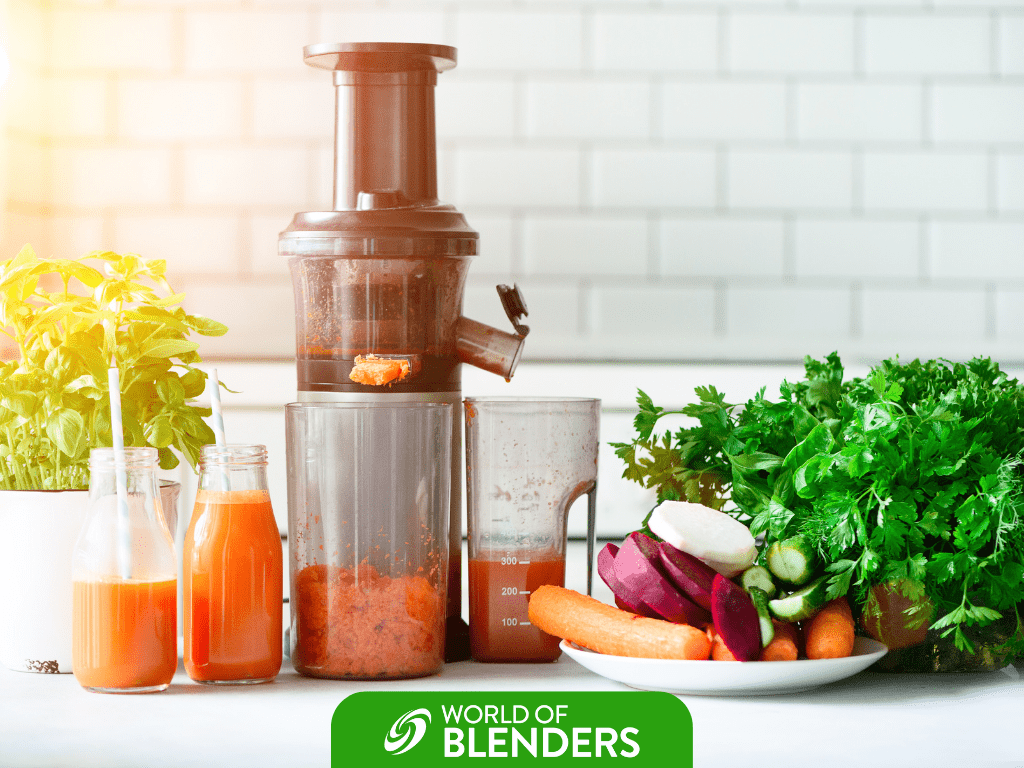
Masticating juicers, also known as slow juicers, use slow rotations of an auger to crush fruits and vegetables against a sharp screen and extract the juice.
This type of juicer is known to be the best in terms of efficiency and producing high-quality juice due to it running at low speeds (about 60-120 RPM).
Masticating juicers come in 2 variations:
1. Horizontal masticating juicers
These are the most affordable among slow juicers, although they do take up a relative amount of space on a counter.
2. Vertical masticating juicers
These are faster than horizontal masticating juicers, easy to clean, and don’t take up too much space on a counter.
If you want to make high-quality juice that stays fresh for longer (compared to centrifugal juicers), and you have some patience, investing in a masticating juicer is an excellent choice.
Pros:
- Nutritious – Masticating juicers have low oxidation so they produce the highest quality, nutrient-dense juice (with more enzymes).
- Yield – Per fruit/veggie, masticating juicers yield more juice than centrifugal juicers.
- Freshness – Juice from a masticating juicer stays fresher than other juicers on this list because it has less oxidization.
- Durable – These types of juicers tend to last longer than some other styles. Vertical juicers are easier to clean and take less maintenance.
- Low-noise – Relatively quiet to operate compared to others like the centrifugal juicers.
Cons:
- Slower – It takes longer to make juice (not ideal if you’re in a hurry)
- Cost – Not always affordable. Other types of juicers might be cheaper, but we still think this is the best type of juicer for beginners.
- Bulky – Larger masticating juicers can take up a lot of counter space.
2. Centrifugal Juicer – Best Juicer for Speed
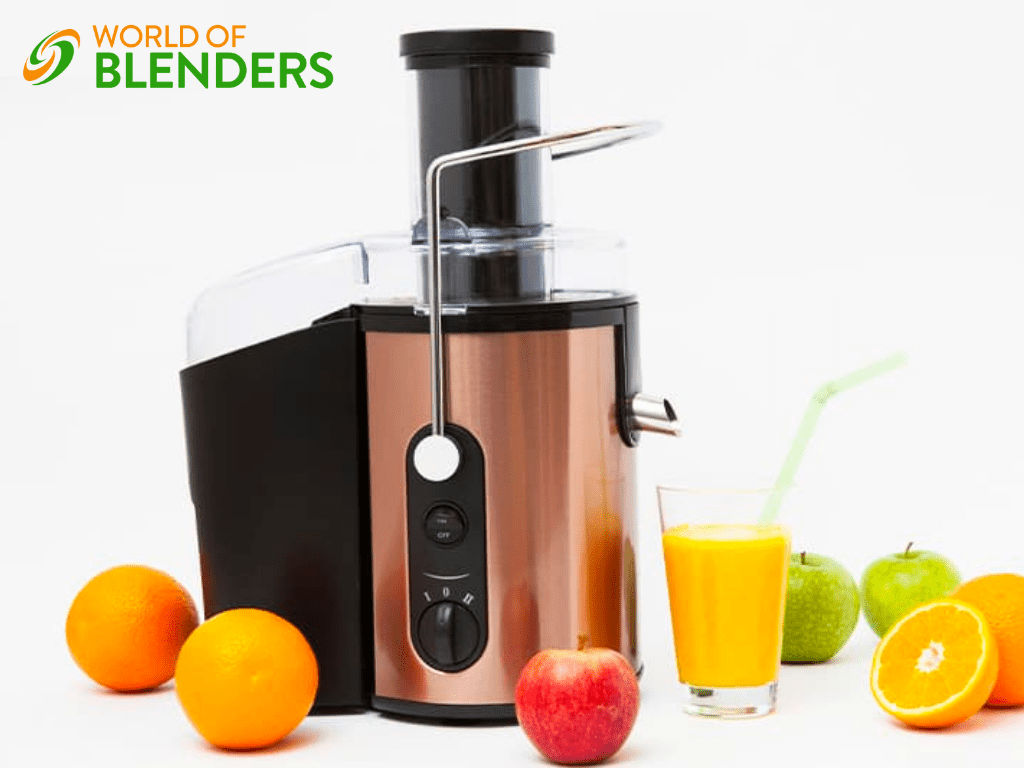
Centrifugal juicers, also known as fast juicers or electric juicers, are the most popular types of juicers for home use. This is mainly because they are cheap and speedy for making juice.
They run at much higher speeds (around 6000 to 14000 RPM) when compared to other kinds of juicers.
A centrifugal juicer works by feeding fruits or veggies through a tube into a sharp, high-speed set of blades that shreds them up. It then pushes the pulp through a sharp screen before the juice pours into your glass.
The juice made from a centrifugal juicer needs to be consumed immediately to reap the health benefits.
Why? Since the machine runs at very high speeds, it causes a high rate of oxidation (loss of nutrients). The oxidation causes the juice to not last as long.
Check out our resource on how long fresh juice lasts to learn how to make your juice last longer!
If you’re on a budget and you plan to drink the juice as soon as you make it, a centrifugal juicer is a great option!
Pros:
- Ease of use – Very easy to operate – just pop the fruit and veg in and switch it on
- Quick – Extracts juice faster than masticating juicers (good if you’re short on time)
- Compact – Stores easily and takes up little space on the counter
- Price – Not expensive when compared to other types of juicers
- Something for everyone – Comes in a wide variety to suit your needs and budget
Cons:
- Less healthy – More oxidation (due to higher speeds)
- Less tasty – The juice quality isn’t as high as from slower juicers. Often creates a layer of foam (due to high speeds)
- Must be consumed straight away – Not ideal if you’re wanting to store juice (best to drink straight away)
- Not suitable for all ingredients – Doesn’t work well with juicing leafy vegetables
- Noise level – Can be noisy due to the very high speeds
- Waste – A lot of pulp is created.
3. Twin Gear Juicer – Highest Performing Juicer that’s Affordable
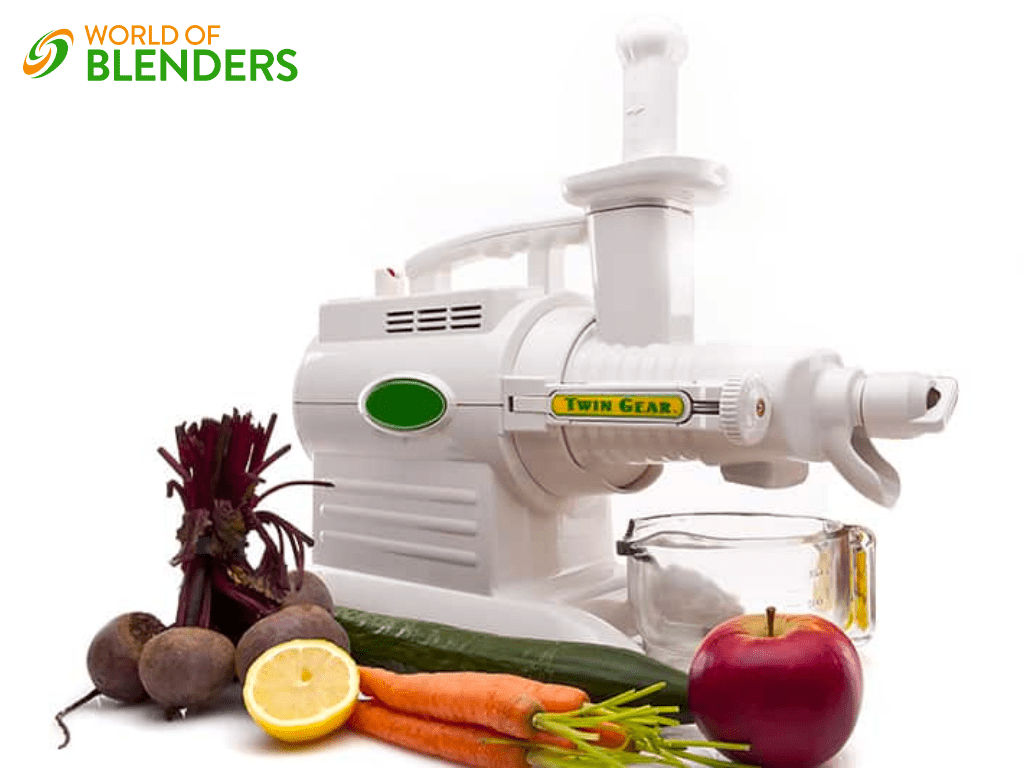
Twin gear juicers, also known as triturating juicers, work similarly to masticating juicers, except they have two augers (instead of one) that rotate and grind up fresh produce to extract the juice.
These types of juicers are more on the expensive side (anywhere from $400 and up), but they are capable of extracting juice at very high quality.
The juice yield also tends to be higher from a twin gear juicer, as two gears are more efficient at separating the pulp from the juice.
If you’re not concerned about sticking to a certain budget, twin gear juicers are definitely worth the high price! You’ll be able to make high-quality juice with a large number of nutrients.
Pros:
- Healthy – Extracts higher levels of nutrients than centrifugal juicers.
- Noise levels – Twin gear juicers run slower, but that does mean they are much quieter!
- Very versatile – Multi-purpose use. (Grinding coffee beans, making nut butter, sorbets, baby food, etc.)
- Less waste – Higher juice yield than speed juicers.
- Extremely durable – Excellent build quality and durable parts make these long-lasting machines.
- Not noisy – Great for those who prefer quiet in the kitchen!
- Juice keeps well – The slower speed means less oxidization resulting in juice that lasts longer.
Cons:
- Expensive – Not as affordable as some other types of juicers.
- Slow – Takes a long time to extract juice when compared to a centrifugal juicer.
- Bulky – Twin gear juicers are bigger so they tend to take up a lot of counter space.
- Difficult to clean – Twin gear juicers have more parts that will double the cleaning time compared to other juicers.
4. Hydraulic Press Juicer – Highest Quality Juice + Best Type of Juicer for Commercial Kitchens
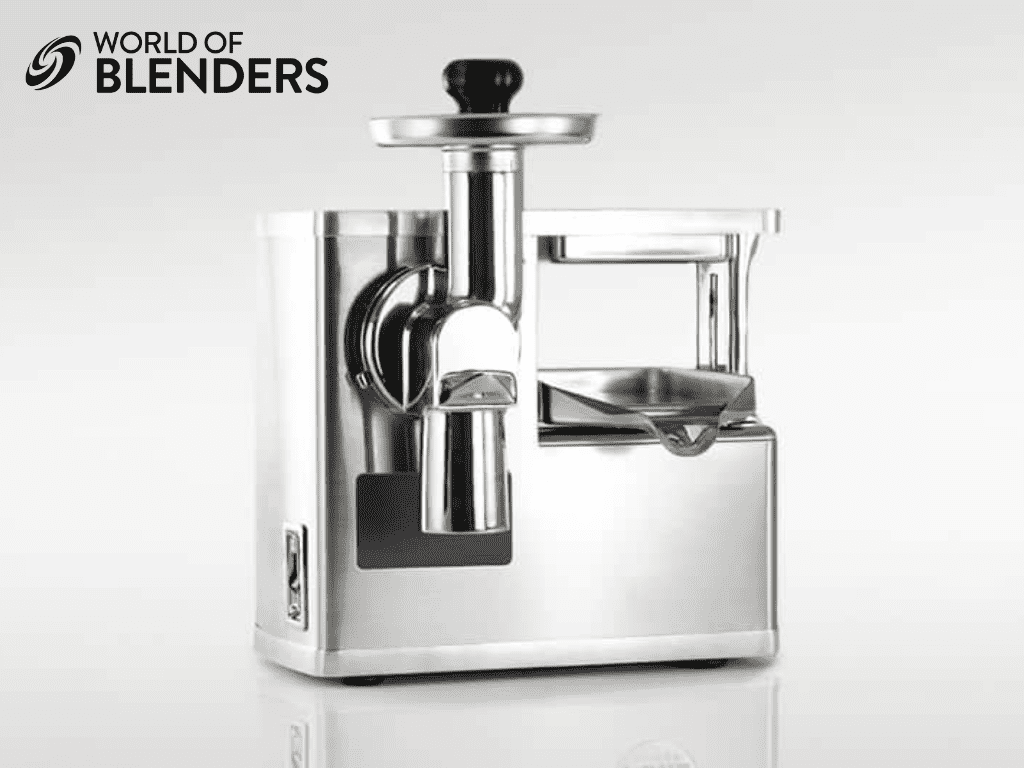
Hydraulic press juicers, also known as pneumatic press juicers, are arguably the best (and oldest) juicers on the market.
These are the original cold press juicers (these days, the term is used for many other types of juicers that don’t even contain a press).
Juice presses work in two stages:
- Fruit or vegetables are ground up into a pulp or manually chopped into small pieces and put into a ‘pulp bag’.
- Juice is extracted slowly by pressing the pulp under thousands of pounds of pressure (around 6000 PSI).
This process results in very pure, nutrient-rich juice with a shelf-life of up to 72 hours (stored in the fridge), and very dry pulp.
Pros:
- Highest nutrients – Preserves the highest amount of nutrients when extracting juice.
- Long-lasting juice – Produces juice with a long shelf life (stored in the fridge).
- Quality juice – Minimal oxidation, doesn’t create foamy juice.
- Noise level – Very quiet to operate.
- Great yield – Produces the highest yield (compared to centrifugal or slow juicers).
- Versatile – Multi-functional use (also make nut butter, nut milk, etc), and can extract juice from leafy greens very effectively.
- Excellent as commercial juicers – All of the above pros make them well-suited to commercial environments.
Cons:
- Price – Hydraulic juicers are the most expensive type of juicer, but they are the most effective.
- Very heavy – Can be challenging to move around/clean.
- Difficult to use – Require reusable or disposable press bags to contain the pulp.
5. Manual Juicer – Best for Citrus
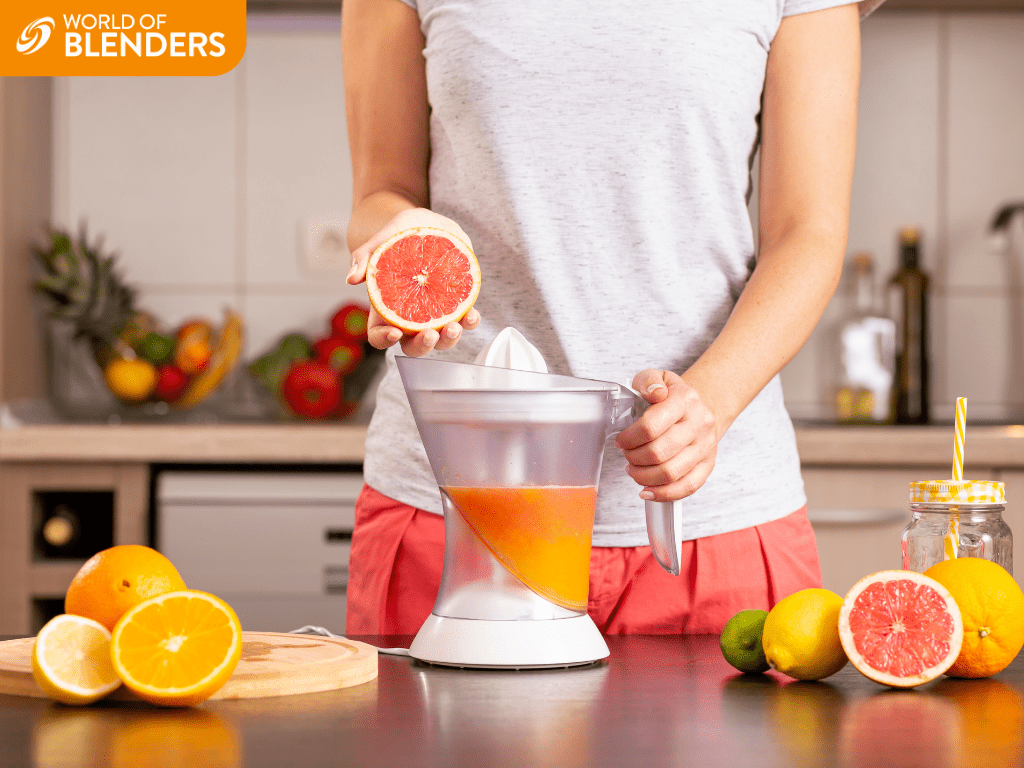
Manual juicers are very common in most people’s homes, and you probably grew up using one to make freshly squeezed orange juice as a kid.
The most common types of manual juicers are:
A. Citrus juicer
Citrus juicers are the most popular juicing kitchen aids. These are commonly used to make fresh orange juice or lemon juice by cutting the fruit in half, pressing it down onto the reamers, and rotating it. Check out our list of the best oranges for juicing if you get a citrus juicer!
B. Hand-press juicers
These can be described as ‘manual citrus juice squeezers’ that are held in one hand, ideally for a quick squirt of lemon juice.
C. Hand-crank juicers
Unlike manual citrus juicers, hand-crank juicers allow you to extract juice from any type of fruit or veggie. All you need is a little muscle power to turn the crank and create a force for the juice to be separated from the pulp.
D. Lever-press juicers
This type of manual juicer is popular in small restaurants or shops where they serve fresh juice. The long lever makes it easy to create enough force to extract juice even from tougher fruits.
Pros:
- Cheap – Often the most affordable type of juicer.
- Portable – They are very small and easy to store.
- Not noisy – Much quieter than electric juicers.
- Healthy, quality juice – Low oxidation rate, retains more nutrients.
- Works anywhere – No electricity is required to operate.
Cons:
- Very slow – Takes very long to make juice (especially in large quantities).
- Difficult to use – Requires some manual labor.
- Limited use – Only extracts juice from a limited variety of fruits and veggies (not ideal to juice greens).
6. Steam Juicer – Best for… Nothing (we don’t recommend steam juicers)
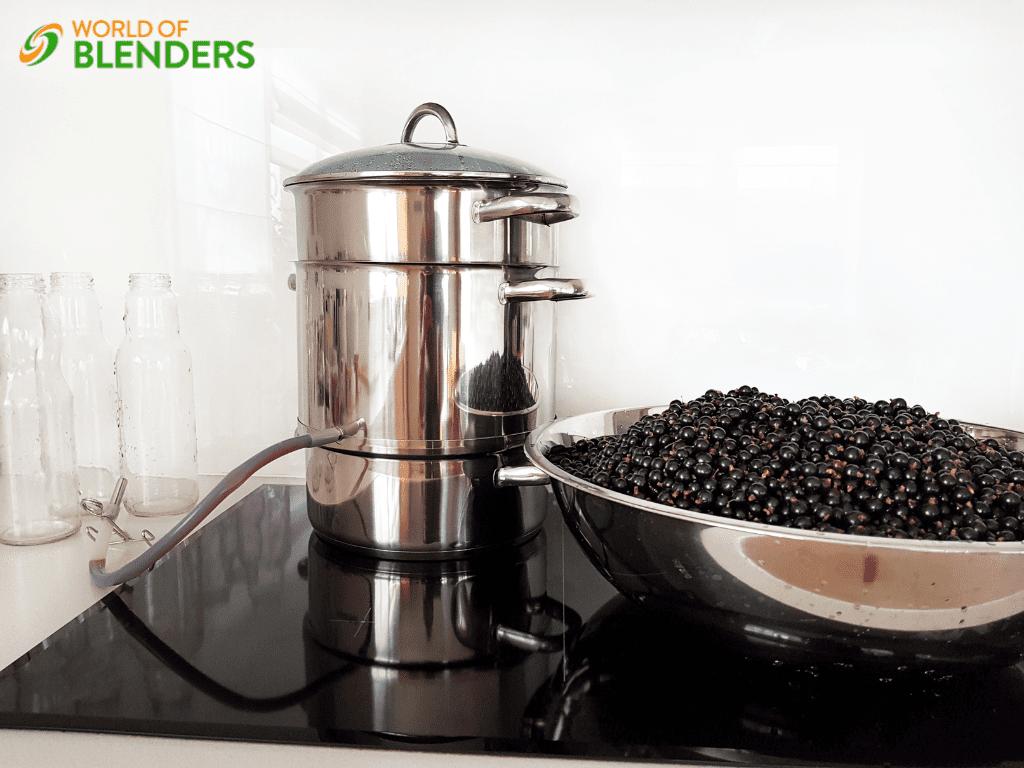
As the name suggests, steam juicers use steam to extract juice from fruits and vegetables.
It’s especially useful for making berry juice and preserving freshly-picked produce.
Steam juicers consist of stacked pots that heat up, creating steam. This results in the juice being released from the fruits or vegetables.
While this type of juicer is great for preserving juice for a long time, it isn’t great for making fresh juice as most of the nutrients are lost through heat.
Pros:
- Can be used for different types of fruits – Effective for extracting juice from berries and other fresh produce.
- Long-life juice – Preserves the juice for long (if stored in air-tight glass containers).
Cons:
- Juice isn’t as nutritious – Juice can lose a large number of nutrients in the process (high temperatures).
- Hard to find – Not widely available.
What Type of Juicer is Worth Buying?
The answer to this big question will depend on your specific needs and the type of juice you intend to make.
To further help you make a decision, try asking yourself the following questions:
- How much time do I have available for juicing?
- What is my budget?
- How often will I be making fresh juice? Every day, or only on special occasions?
- What is more important to me: saving time and effort, or making top-quality juice, rich in nutrients?
- How much space do I have in my kitchen for a juicer?
According to your answers to these questions, and the pros and cons of each juicer listed above, you should be able to pick the perfect juicer for you.
If you’re new to the world of juicing, consider starting out with something inexpensive, and you can always upgrade at a later stage.
If you’re looking for the best juicers for your business, bar, or restaurant, go for a masticating juicer, a triturating juicer, or even a hydraulic juice press to ensure you produce high-quality juice.
What should I look for in a good juicer?
No matter what type of juicer you decide to buy, it’s important that you look for the following factors in a good, efficient juicer:
- Ease of use (simple to assemble and operate)
- How easy it is to clean
- The speed at which it runs
- The size of the feed tube (the bigger the tube, the less you need to chop your fruits or veg)
- Noise levels
- A warranty.
Read more: Prune juice vs Plum juice
How Much Do Juicers Cost?
This depends on a variety of different factors, including the type of juicer, the brand, and the model of the juicer.
You can expect to pay anywhere from $50 all the way up to $2,000.
As a rule of thumb, fast centrifugal juicers are less expensive than slow masticating or cold press juicers.
Slow press juicers are typically the most expensive types of juicers on the market.
As with most things in life, you get what you pay for when it comes to buying a juicer. You also want to make sure that your juicer comes with a warranty – especially if it’s on the more expensive side.
How Does a Juicer Work?
A juicer makes it extremely easy to effectively extract juice from fruits and vegetables.
The exact way in which this works depends entirely on the type of juicer being used, but all juicers have the following method in common:
- Prepared fruit and/or vegetables are fed into the opening of the juicing machine.
- The fresh produce is either pressed, spun, or ground up.
- The pulp is separated from the juice.
- And this results in pure, healthy, fresh juice!
We’ll take a more detailed look at how different types of juicers work below.
Common Questions About Juicers
Slower juice extraction, from juice presses, masticating juicers, or twin gear juicers produces the healthiest juice when compared to centrifugal juicers.
A slow juicer is considered superior when it comes to fresh juice nutrient density extracted from fruits and vegetables. It also creates juice with a longer shelf-life.
Slow juicers and manual juicers tend to be easy to clean, as the components can easily be taken apart and rinsed when needed. The straining baskets are also usually easier to clean. On the other hand, centrifugal juicers can be challenging to clean, especially when fibers get stuck in the internal components.
It depends. If you use your juicer many times a day, you will just need to clean it after the last batch of juice is made. If you are just juicing once a day, it’s essential that you clean the juicer after using it. It only takes 5 minutes or less, and it will prevent food particles from decaying in your juicer or becoming hard to remove at a later stage.
The biggest difference between a centrifugal juicer and a masticating juicer is the speed they need to operate. Centrifugal juicers work by running at extremely high speeds (up to 16000 RPM). In contrast, masticating juicers operate at much slower speeds (between 60 and 120 RPM).
If you want to consume a high concentration of nutrients and antioxidants that are easy to absorb due to the fiber being removed, juicing is amazing! Plus many people have difficulty stomaching the taste of vegetables, so juicing is a quick way to get them in.
If you’re looking for a meal replacement, blending (a smoothie) is a much better option. This process doesn’t remove the fiber and pulp of the fresh produce, keeping you fuller for longer, and reducing the chance of a blood sugar spike.
There are a number of things you can do with leftover pulp from juicing:
1. Blend it into a smoothie to add more fiber
2. Boil the pulp with water to make a tasty ‘fruit tea’ and add healthy spices like cinnamon, or fresh ginger
3. Add vegetable pulp (like celery, or leafy greens) to a pasta dish to make it healthier
4. Make a savory vegetable broth using your vegetable pulp from celery, carrots, onion, garlic, etc.
When compared to a centrifugal juicer, a masticating (or slow) juicer produces juice that contains higher levels of nutrients, including vitamins, minerals, and enzymes. This is due to masticating juicers running at slower speeds and causing lower oxidation rates.
A juice press (hydraulic press juicer) is said to retain the highest level of nutrients and produce a higher juice yield than other types of juicers. When choosing between a centrifugal or slow juicer, a slow juicer produces higher-quality juice.
Not necessarily, a fast juicer has not been proven to “destroy” nutrients in fresh juice, but when compared to juice produced by other types of slower juicers, it creates a lower-quality juice.
This is due to heat and oxidation from the very high speed of centrifugal juicers.
Electric centrifugal juicers are the most common type of commercial juicers used in restaurants, juice bars, and hotels. Many spas and health retreat centers use special wheatgrass juicers to make healthy wheatgrass shots. Some health-food restaurants use hydraulic press juicers to ensure their juice is of the highest quality.
Final Thoughts: Which Type of Juicer is Right for You?
Buying a juicer for the first time doesn’t have to be daunting, and when it comes to picking the best types of juicers, there is no ‘one size fits all’.
The best type of juicer for you will be one that suits your needs, your budget, and even your health goals! I will say that most people tend to go with a masticating or centrifugal juicer because they’re easiest to use and not too expensive.
Whether you want to start with something convenient and inexpensive, or you’re looking to invest in a more upmarket juicer for your daily juicing routine – there is definitely something for everyone. What are you waiting for? Go get juicing!

